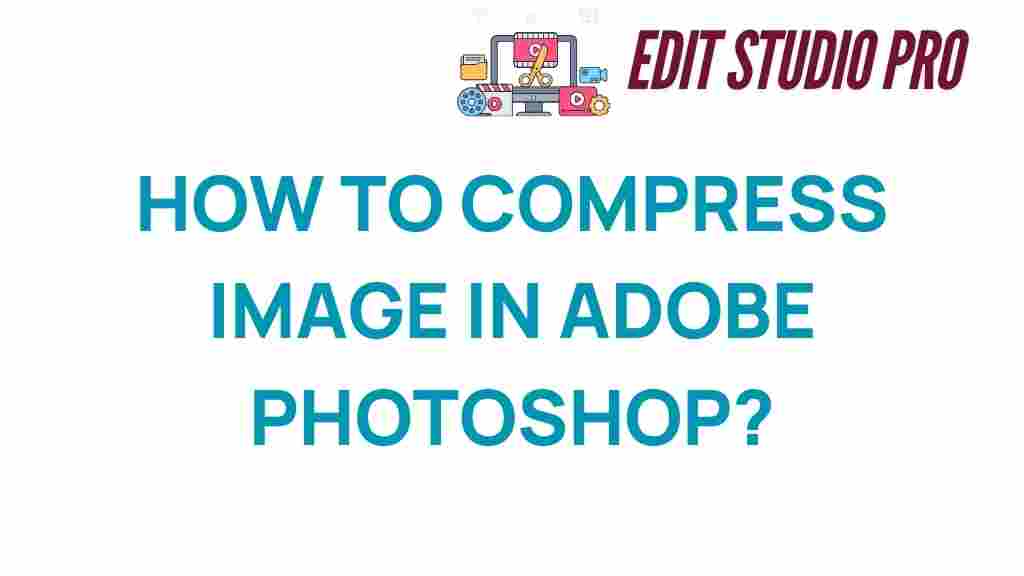Mastering Image Compression: Unlocking Adobe Photoshop’s Hidden Potential
In the world of digital art and graphic design, image compression is a crucial skill that can dramatically enhance your workflow. Adobe Photoshop, a powerhouse in photo editing, offers a plethora of tools to optimize images, ensuring they look great while minimizing file size. In this article, we will explore the art of image compression in Adobe Photoshop, providing you with software tips to master this essential process and achieve effective file size reduction.
The Importance of Image Compression
Image compression is vital for various reasons, including:
- Faster Loading Times: Compressed images load quicker on websites, improving user experience and SEO.
- Storage Efficiency: Reducing file size saves disk space, making it easier to manage large digital art projects.
- Improved Sharing: Smaller files are easier to share via email or social media without sacrificing quality.
- Better Performance: Optimized images enhance the performance of graphic design projects and web pages.
Understanding Image Compression Formats
Before diving into the steps of image compression, it’s essential to understand the different formats available in Adobe Photoshop:
- JPEG: Ideal for photographs, offering high compression rates with acceptable quality loss.
- PNG: Best for images that require transparency or high detail, but with larger file sizes compared to JPEG.
- GIF: Suitable for simple graphics and animations, with limited color palettes.
- TIFF: High-quality image format often used in professional settings, but results in larger files.
Step-by-Step Guide to Optimize Images in Adobe Photoshop
Now, let’s delve into how to effectively compress and optimize your images using Adobe Photoshop.
Step 1: Open Your Image
Start by launching Adobe Photoshop and opening the image you wish to compress.
Step 2: Resize Your Image (If Necessary)
If your image is larger than needed, resize it to the appropriate dimensions:
- Go to Image > Image Size.
- Adjust the width and height while maintaining the aspect ratio.
- Click OK to apply the changes.
Step 3: Save for Web
To effectively compress your image, use the “Save for Web” feature:
- Navigate to File > Export > Save for Web (Legacy).
- In the dialog box, select the desired file format (JPEG, PNG, GIF, etc.).
- Adjust the quality slider to find the right balance between quality and file size.
- Check the preview to see the effects of compression in real-time.
- Click Save and choose your destination folder.
Step 4: Use Advanced Compression Techniques
For those looking to take their image compression further, consider these advanced techniques:
- Utilize the “Optimize” setting: This option can help you achieve maximum compression without significantly affecting image quality.
- Experiment with different formats: Sometimes, switching from JPEG to PNG or vice versa can yield better results.
- Reduce Color Depth: For certain images, especially GIFs, reducing the number of colors can drastically reduce file size.
Step 5: Batch Compression for Efficiency
If you have multiple images to compress, Adobe Photoshop allows for batch processing:
- Go to File > Scripts > Image Processor.
- Select the folder containing your images.
- Choose the destination folder and file type.
- Click Run to execute batch compression.
Troubleshooting Common Compression Issues
While compressing images in Adobe Photoshop, you may encounter some issues. Here are some common problems and their solutions:
Issue 1: Loss of Quality
If you notice significant quality loss:
- Try adjusting the quality slider in the “Save for Web” dialog.
- Consider using a lossless format like PNG for images that require high detail.
Issue 2: File Size Not Reducing as Expected
If file size reduction is minimal:
- Check the image dimensions. Larger images will naturally lead to larger file sizes.
- Try different formats or compression settings for better results.
Issue 3: Compatibility Problems
Sometimes, specific formats may not be suitable for certain platforms:
- Ensure you’re using widely accepted formats like JPEG or PNG when sharing online.
- Consult platform guidelines for recommended image specifications.
Additional Tips for Image Compression
Here are some extra software tips to enhance your image compression skills:
- Use Smart Objects: This allows for non-destructive editing, enabling you to resize or modify images without losing quality.
- Utilize Layers Wisely: Flatten layers before compression to reduce file size while maintaining quality.
- Keep an Original Copy: Always save an uncompressed version of your image for future edits.
Conclusion
Mastering image compression in Adobe Photoshop is an invaluable skill for photographers, graphic designers, and digital artists alike. By understanding the various formats, using the “Save for Web” feature, and applying advanced techniques, you can significantly optimize images and reduce file sizes without compromising quality. Remember to troubleshoot common issues and implement the additional tips for better results.
Whether you’re looking to improve website performance or just streamline your design workflow, effective image compression can unlock Adobe Photoshop’s hidden potential. Start practicing these techniques today, and watch your digital art transform with optimized images!
For more insights on graphic design techniques, check out our [Graphic Design Resources](#) and explore the world of digital art further with this [External Resource](#).
This article is in the category Photo Editing and created by EditStudioPro Team
